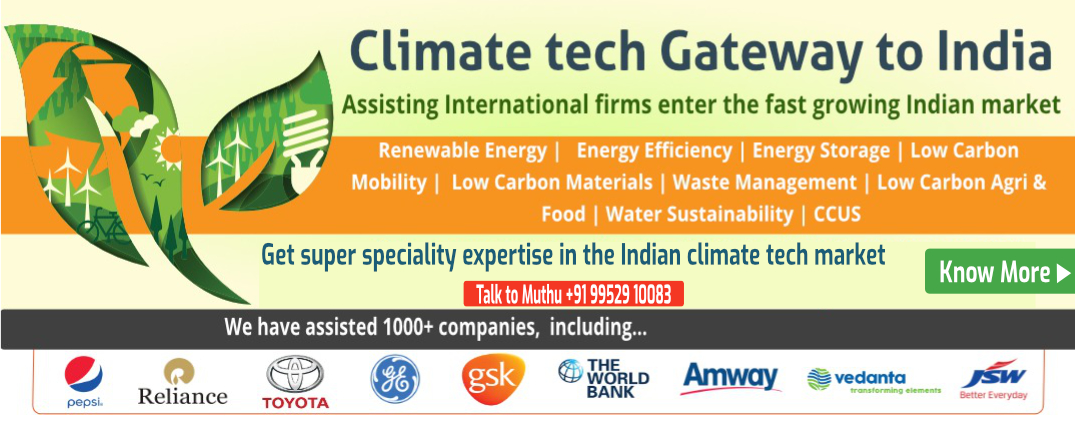This post is a part of Climate G2I Intelligence series from Energy Alternatives India (EAI), India’s leading climate-tech consulting firm.
G2I stands for Gateway 2 India, and provides comprehensive market intelligence and go-to market assistance for International firms entering the Indian climate-tech market. More about Climate G2I from here
LafargeHolcim, a global leader in building materials and solutions, is making significant strides to expand its presence and improve sustainability in India. The company recently announced plans to construct a new cement plant in Rajasthan, bolstering its position in the country’s fast-growing market. Furthermore, a substantial investment of €92.3 million in waste heat recovery systems demonstrates their commitment to reducing their environmental footprint across operations.
LafargeHolcim isn’t alone in seeing the opportunities within the Indian market. Cooling India, an industry-focused magazine, reports on the growing trend of investing in sustainable climate technologies. With a focus on improving energy efficiency and reducing emissions, companies across this sector are finding an increasingly receptive and fast-growing consumer base in India.
India’s cement sector, already the second-largest in the world, continues to see strong growth projections. This growth is fueled by a booming construction industry and a rapidly expanding middle class, driving the demand for housing and infrastructure development. The Indian government also plays a key role with initiatives like the National Mission for Sustainable Habitat promoting the use of green building materials. This fosters an environment where cement companies prioritizing sustainability have a significant advantage.
Net Zero by Narsi
Insights and interactions on climate action by Narasimhan Santhanam, Director - EAI
View full playlistWhile India offers great promise, entering it as a foreign company requires overcoming a few challenges. The regulatory landscape can be complex, the market is highly competitive, and a potential skills gap exists as technology and sustainable practices are adopted. To navigate these hurdles, international companies can form strategic partnerships and alliances with established local players. LafargeHolcim, for example, has found success collaborating with Southeast University in Nanjing, demonstrating the value of knowledge-sharing and technology transfer. Additionally, they have partnered with Ambuja Cement, an established Indian player, to leverage their local expertise and market knowledge.
The Indian cement sector boasts a high level of indigenization, meaning much of the raw materials and production equipment are sourced domestically. While this presents advantages, there’s room for improvement concerning reliance on foreign imports for specialized components and advanced technologies. The government actively encourages further indigenization through initiatives like financial incentives, research promotion, and technology transfer. This fosters the development of a self-sufficient cement industry, reducing reliance on foreign imports.
Overall, the Indian cement market offers vast potential, but success requires navigating challenges and understanding the nuanced incentives and drivers underpinning this sector. Companies embracing sustainability, leveraging strategic partnerships, and working towards greater indigenization will position themselves to thrive in this dynamic market.
This post is a part of Climate G2I Intelligence series from Energy Alternatives India (EAI), India’s leading climate-tech consulting firm.
G2I stands for Gateway 2 India, and provides comprehensive market intelligence and go-to market assistance for International firms entering the Indian climate-tech market. More about Climate G2I from here






 Our specialty focus areas include
Our specialty focus areas include



